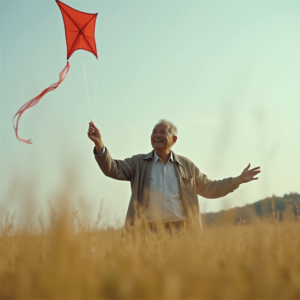
Mindfulness meditation stands as one of the most accessible and effective practices for mental wellbeing in our fast-paced world. This ancient practice—now backed by modern science—offers a path to reduced stress and increased mental clarity through present-moment awareness. For beginners, mindfulness meditation options provide a straightforward entry point into meditation without requiring complex techniques or spiritual commitments.
Introduction: What Is Mindfulness Meditation?
At its core, mindfulness meditation involves paying attention to your current experience with openness and acceptance. The practice trains your mind to observe thoughts and sensations without judgment, creating space between stimulus and response. This simple yet profound shift in perspective can transform how you relate to stress, difficult emotions, and daily challenges.
Unlike other meditation styles that might focus on visualization or chanting, mindfulness emphasizes the direct observation of your present experience. This approach makes it particularly accessible for beginners and compatible with any belief system. The practice can be as simple as focusing on your breath or as expansive as bringing awareness to all aspects of your daily activities.
Regular mindfulness practice gradually develops greater self-awareness, emotional regulation, and cognitive flexibility. These foundational skills help you respond rather than react to life’s challenges, creating a more balanced approach to both pleasant and difficult experiences. Even a few minutes of daily practice can begin to cultivate these beneficial qualities.
Key Elements of Mindfulness Practice:
- Present-moment awareness – focusing attention on what’s happening right now
- Non-judgmental observation of thoughts, emotions, and sensations
- Gentle redirection of attention when the mind wanders
- Cultivation of curiosity and acceptance toward all experiences
- Regular practice to develop and strengthen awareness skills
The Science Behind Mindfulness Meditation
Research consistently demonstrates that mindfulness meditation produces measurable changes in both brain structure and function. MRI studies show increased gray matter density in regions associated with memory, emotional regulation, and decision-making after just eight weeks of regular practice. These neurological changes help explain the wide range of benefits reported by regular practitioners.
The neuroplasticity effects of mindfulness are particularly remarkable because they occur relatively quickly and across different age groups. One landmark study conducted at Harvard found that participants showed significant growth in the hippocampus (involved in learning and memory) and reductions in the amygdala (associated with stress and fear processing) after an eight-week mindfulness program. These structural changes correlated directly with improvements in psychological well-being.
Beyond brain structure, mindfulness meditation also affects how different brain regions communicate with each other. Regular practice strengthens connectivity between the prefrontal cortex (responsible for higher thinking) and the emotional centers of the brain. This improved integration helps explain why mindfulness practitioners demonstrate greater emotional regulation and reduced reactivity to stressors.
Evidence-Based Benefits:
- 40% reduction in perceived stress levels
- Improved focus and attention span
- Enhanced emotional regulation
- Better sleep quality
- Decreased symptoms of anxiety and depression
The science is clear: mindfulness meditation isn’t just a relaxation technique—it’s a powerful tool that physically reshapes how your brain processes information and emotions. These benefits accumulate over time but can begin with sessions as short as five minutes per day.
What makes mindfulness particularly valuable is its accessibility. Unlike medication or therapy, it requires no special equipment, can be practiced anywhere, and puts you in control of your mental health. The combination of scientific validation and practical application makes mindfulness meditation a uniquely valuable skill for navigating modern life.
Getting Started: The Fundamentals of Practice
Beginning a mindfulness meditation practice doesn’t require elaborate preparations. The essentials are simpler than you might expect. Creating the right conditions for practice can help establish consistency and make your meditation sessions more effective, especially when you’re just starting out.
Remember that mindfulness is a skill developed through regular practice rather than a talent you either have or don’t have. Like learning any new skill, approach it with patience and self-compassion. Each time you practice, regardless of how it feels, you’re strengthening your capacity for present-moment awareness and building neural pathways that support attention and emotional regulation.
Start with modest expectations and recognize that consistency matters more than perfection or duration. A regular five-minute practice often yields greater benefits than occasional longer sessions. As you develop comfort with the basics, you can gradually expand your practice according to your personal needs and schedule.
Finding Your Space
 Choose a quiet location where interruptions are unlikely. This doesn’t need to be a dedicated meditation room—a corner of your bedroom, a comfortable chair, or even your parked car can work perfectly. The key is consistency rather than perfection.
Choose a quiet location where interruptions are unlikely. This doesn’t need to be a dedicated meditation room—a corner of your bedroom, a comfortable chair, or even your parked car can work perfectly. The key is consistency rather than perfection.
While many people associate meditation with completely silent environments, that’s not always practical or necessary. Some background noise is usually fine, especially if it’s consistent and not overly distracting. For environments with unpredictable noise, consider using earplugs or soft background sounds like white noise to create a more controlled auditory space.
Your meditation area should feel inviting rather than intimidating. Simple touches like a comfortable cushion, a candle, or a small plant can create a visual reminder of your practice intention. The space doesn’t need to be large—just a designated area where your mind begins to associate the location with mindfulness practice.
Posture Basics
While traditional images show meditators in cross-legged positions, comfort should be your priority. Maintaining alert awareness while remaining relaxed is the goal of proper meditation posture. An uncomfortable position will create distraction, while one that’s too comfortable might lead to drowsiness.
The position of your spine plays a crucial role in balancing alertness with relaxation. Aim for a naturally straight spine that maintains its normal curves without rigidity or slumping. This alignment helps keep you alert while allowing the breath to flow naturally, creating optimal conditions for sustained attention.
Your hands and arms should be positioned in a way that promotes stability and relaxation. Common positions include resting your hands on your thighs, palms down for grounding or palms up for receptivity, or gently clasped in your lap. Experiment to find what feels most natural and supportive for your practice.
Recommended Seating Options:
- Sitting in a chair with feet flat on the floor
- Sitting on a cushion with legs crossed comfortably
- Lying down (if you can stay alert)
- Using a meditation bench that supports kneeling posture
- Standing meditation for those with significant physical limitations
Time Commitment
Start with just 5 minutes daily. This might seem brief, but consistency matters more than duration. Beginning with a manageable timeframe helps establish the habit and builds confidence in your ability to maintain the practice. Many beginners set unrealistic time goals and then feel discouraged when they can’t maintain longer sessions.
As your comfort grows, gradually extend your sessions to 10, 15, or 20 minutes. This progressive approach allows your attention muscles to strengthen naturally, similar to how you would gradually increase physical exercise. Pay attention to your experience rather than rigidly adhering to predetermined timeframes—some days may naturally support longer sessions than others.
Consider using a timer with a gentle sound to signal the end of your session. This removes the distraction of checking the time and allows you to fully immerse in the practice. Many meditation apps offer timers specifically designed for meditation, with pleasant sounds that won’t startle you out of a peaceful state.
Tracking Progress
Consider using a simple meditation app to track your practice. Many offer timers, guided sessions, and progress tracking to help maintain consistency. The data can provide valuable motivation as you establish your routine and may reveal patterns in your practice that aren’t immediately obvious.
Maintaining a brief meditation journal can offer insights into your developing practice. Simple notes about duration, techniques used, and general observations help you notice subtle changes over time. This record becomes particularly valuable during periods when progress seems slow, as it can highlight improvements you might otherwise miss.
Remember that progress in meditation often doesn’t follow a linear path. Some days will feel peaceful and focused, while others might be characterized by restlessness or distraction. These variations are normal and provide valuable opportunities to practice non-judgment and acceptance—core skills that meditation develops.
The Four Core Mindfulness Meditation Techniques
 Mindfulness meditation encompasses several techniques that work together to develop present-moment awareness. These four fundamental practices provide a complete toolkit for beginners. Each approach targets different aspects of attention and awareness, creating a well-rounded foundation for your mindfulness practice.
Mindfulness meditation encompasses several techniques that work together to develop present-moment awareness. These four fundamental practices provide a complete toolkit for beginners. Each approach targets different aspects of attention and awareness, creating a well-rounded foundation for your mindfulness practice.
These techniques aren’t meant to be practiced in isolation but rather as complementary approaches that support each other. During a single meditation session, you might start with breath awareness, transition to a body scan, practice observing thoughts, and then expand into open awareness. This progression helps develop both focused attention and broader awareness.
As you explore these practices, notice which ones resonate most with you while also giving adequate attention to those that feel more challenging. The techniques that feel difficult often provide the greatest opportunities for growth. With consistent practice, all four approaches become valuable tools for developing mindfulness both during formal meditation and in daily life.
1. Breath Awareness
The breath serves as an anchor to the present moment. Always available and constantly changing, the breath provides a perfect focus point for beginning meditators. Its rhythmic nature helps calm the nervous system while its physical sensations create a concrete object for attention.
This technique builds concentration and provides a home base for your attention throughout your practice. The simplicity of breath meditation belies its profound effects—research shows that regular breath awareness practice activates the parasympathetic nervous system, countering stress responses and creating a foundation for emotional regulation and clear thinking.
Many practitioners find it helpful to mentally note “in” and “out” or count breaths to help maintain focus. These subtle mental labels can help bridge the gap between scattered attention and sustained awareness, particularly during the early stages of practice.
Breath Awareness Instructions:
- Direct your attention to the physical sensations of breathing
- Notice the rise and fall of your chest or abdomen
- Feel the air entering and exiting your nostrils
- When your mind wanders (which it will), gently return focus to your breath
- Avoid controlling your breathing—simply observe its natural rhythm
2. Body Scan Meditation
The body scan cultivates awareness of physical sensations throughout your entire body. This practice strengthens interoception—the ability to sense your body’s internal state—which research links to improved emotional regulation and decision-making. For many people whose attention is primarily directed outward or caught in thought, the body scan creates a vital reconnection with physical experience.
Regular body scan practice helps identify tension patterns that often go unnoticed. Many people discover they habitually carry stress in specific areas like the jaw, shoulders, or lower back. Simply bringing awareness to these areas can initiate relaxation and create more conscious choices about how we hold and move our bodies.
Beyond relaxation, the body scan develops equanimity—the capacity to be with all experiences without resistance or attachment. By methodically observing pleasant, unpleasant, and neutral sensations with the same accepting awareness, you build emotional resilience that extends to all life experiences.
Body Scan Method:
- Begin at the top of your head or your feet
- Slowly move your attention through each part of your body
- Notice sensations without trying to change them
- Acknowledge areas of tension, comfort, or neutrality
- If you find tension, breathe into that area with acceptance
3. Thought Observation
This technique involves watching your thoughts without getting caught in their stories. Most people identify strongly with their thoughts, creating unnecessary suffering when thoughts are negative or worrisome. Thought observation creates distance between yourself and your thinking processes, revealing that you are the awareness in which thoughts appear rather than the thoughts themselves.
Learning to observe thoughts without automatically believing or acting on them provides tremendous freedom from habitual thinking patterns. This skill proves particularly valuable for working with anxiety, rumination, and self-criticism—common challenges that many people face in today’s demanding world. With practice, you can respond to thoughts based on their usefulness rather than their emotional intensity.
Regular thought observation eventually reveals patterns in your thinking that might otherwise go unnoticed. You might discover recurring worries, judgments, or planning thoughts that habitually occupy your attention. This metacognitive awareness—the ability to observe your own thinking patterns—creates opportunities for more conscious choices about where and how you direct your mental energy.
Thought Observation Practice:
- Notice thoughts as they arise in your mind
- Label them simply as “thinking” without analyzing content
- Visualize thoughts as clouds passing through the sky
- Practice returning to your breath when caught in thought streams
- Observe without judgment, even when thoughts are emotional
4. Open Awareness
 Once comfortable with the above techniques, try open awareness. This expansive practice develops a spacious quality of attention that includes all aspects of experience without fixating on any particular element. Open awareness creates a receptive mental space where experiences can arise and pass naturally, without the need to control or manipulate them.
Once comfortable with the above techniques, try open awareness. This expansive practice develops a spacious quality of attention that includes all aspects of experience without fixating on any particular element. Open awareness creates a receptive mental space where experiences can arise and pass naturally, without the need to control or manipulate them.
This practice closely resembles how mindfulness is applied in daily life, where we must navigate complex, changing environments with awareness rather than tunnel vision. The flexible attention developed through open awareness helps maintain presence during conversations, creative work, and decision-making processes, allowing access to more information when engaging with complex situations.
Over time, open awareness fosters a profound shift in perspective from identifying with experience to recognizing yourself as the aware space in which all experiences appear. This wider perspective reduces reactivity and creates greater psychological freedom, allowing you to engage with life’s challenges from a more centered, grounded position.
Open Awareness Approach:
- Expand your attention to include all present experiences
- Notice sounds, sensations, thoughts, and emotions
- Allow experiences to come and go without fixating on any single one
- Maintain a sense of spacious awareness that holds all experiences
- If attention narrows, briefly return to breath before expanding again
Common Challenges and Their Solutions
 Every beginner encounters obstacles when learning mindfulness meditation. Recognizing these challenges as normal parts of the process helps maintain motivation. Rather than signs of failure, these common difficulties represent opportunities to deepen your understanding and strengthen your practice.
Every beginner encounters obstacles when learning mindfulness meditation. Recognizing these challenges as normal parts of the process helps maintain motivation. Rather than signs of failure, these common difficulties represent opportunities to deepen your understanding and strengthen your practice.
Meditation reveals how our minds naturally function, including patterns we might not notice in everyday life. Discovering that your mind wanders constantly or that you experience frequent restlessness doesn’t mean you’re “bad at meditation”—it means you’re becoming aware of your actual mental patterns. This growing awareness, even of challenging states, represents the success of the practice rather than its failure.
Approaching these challenges with curiosity rather than frustration transforms potential obstacles into valuable learning experiences. Each difficulty encountered during meditation offers insights into habitual patterns that likely affect many areas of your life. Working skillfully with these patterns during formal practice develops tools that transfer to daily challenges.
Mind Wandering
Challenge: Your attention repeatedly drifts from your intended focus.
Solution: This isn’t failure—it’s the core opportunity of the practice. Each time you notice your mind has wandered, you’re building awareness. Simply return to your anchor (like the breath) without self-criticism. This mental “bicep curl” strengthens attention over time.
Mind wandering happens to everyone, regardless of experience level. Research shows that even long-term meditators experience mind wandering—they simply notice it more quickly and return to present awareness more efficiently. The frequency of mind wandering typically doesn’t decrease as much as the duration of each wandering episode.
Try using gentle mental noting when you notice wandering, such as silently saying “thinking” or “wandering.” This simple label helps interrupt the thought stream without creating additional judgment. Then, with kind awareness, redirect attention to your chosen focus. This process—wander, notice, return—repeated thousands of times is exactly how meditation strengthens attention.
Restlessness and Boredom
Challenge: You feel fidgety, impatient, or bored during meditation.
Solution: Rather than fighting these feelings, make them the object of your meditation. Notice where restlessness appears in your body. Observe boredom with curiosity. These difficult states become valuable teachers when approached with mindful awareness.
Restlessness often emerges when we slow down after periods of constant stimulation and activity. The mind, accustomed to constant input, registers the relative quiet of meditation as uncomfortable. This discomfort typically diminishes as you adapt to periods of less stimulation and discover the richness available in present-moment experience.
If restlessness is particularly strong, consider incorporating movement into your practice. Walking meditation or gentle movement between seated sessions can help channel physical energy while maintaining mindful awareness. Some traditions explicitly recommend movement practices for practitioners who experience significant restlessness.
Sleepiness
Challenge: You consistently feel drowsy or fall asleep during practice.
Solution: Try meditating earlier in the day, opening your eyes slightly, practicing in a brighter room, or maintaining a more upright posture. Sometimes brief episodes of sleepiness can be observed just like any other state.
Sleepiness during meditation often reveals sleep deprivation in daily life. If drowsiness is a consistent challenge, examine your sleep habits and consider whether you’re getting adequate rest. Meditation amplifies awareness of your body’s actual condition, including fatigue that might be masked by caffeine or constant activity during the day.
For persistent sleepiness even with adequate sleep, try adjusting your meditation posture. Maintaining a straight spine with your head balanced over your shoulders helps promote alertness. Some practitioners find that meditating standing up or with eyes partially open significantly reduces drowsiness while still allowing for mindful awareness.
Expectations and Self-Judgment
Challenge: You feel like you’re “not good at meditation” or not progressing fast enough.
Solution: Remember that there’s no “perfect meditation.” The practice isn’t about achieving a particular state but about cultivating awareness of whatever is present. Notice perfectionistic thoughts as just another form of thinking.
Many beginners approach meditation with unconscious expectations about achieving special states or immediate stress relief. When reality doesn’t match these expectations, disappointment can arise. Recognize that beneficial changes often occur gradually and sometimes outside your conscious awareness. The people around you might notice changes in your reactivity or presence before you do.
Consider keeping track of subtle changes in your daily life rather than judging the quality of individual meditation sessions. Notice whether you’re catching yourself before reacting in situations that would have previously triggered automatic responses. These real-life changes often provide more meaningful evidence of progress than how any particular meditation session feels.
Consistency Issues
Challenge: You struggle to maintain a regular practice.
Solution: Connect meditation to an existing habit (like morning coffee), use a calendar to track your sessions, or commit to an absurdly small amount (even just one minute). Focus on consistency rather than duration.
Many people find it helpful to meditate at the same time each day, allowing the practice to become integrated into their daily rhythm. The specific time matters less than the consistency. Choose a time when you’re reasonably alert and unlikely to be interrupted.
If you miss a day, simply begin again without self-criticism. The ability to start fresh after interruptions is itself a valuable mindfulness skill that transfers to many life situations. Some meditation teachers suggest that how you handle missed sessions reveals more about your relationship with yourself than the consistency of your practice itself.
Integrating Mindfulness into Daily Life
 While formal meditation builds core skills, the true power of mindfulness emerges when integrated throughout your day. These practical applications help extend your practice beyond the cushion. The ultimate goal of mindfulness isn’t to become good at meditation but to live with greater awareness, presence, and compassion in all aspects of life.
While formal meditation builds core skills, the true power of mindfulness emerges when integrated throughout your day. These practical applications help extend your practice beyond the cushion. The ultimate goal of mindfulness isn’t to become good at meditation but to live with greater awareness, presence, and compassion in all aspects of life.
Informal mindfulness practice often begins with simple awareness of routine activities that we typically perform on autopilot. By bringing full attention to everyday experiences like eating, walking, or listening, you transform ordinary moments into opportunities for presence and appreciation. This approach helps bridge the gap between formal meditation and daily living.
Start by selecting one or two everyday activities to practice with mindful awareness. Once mindfulness during these activities becomes more natural, gradually expand to other aspects of your day. This progressive approach builds a foundation of mindful living that can eventually encompass most of your waking hours, creating a more connected and conscious life experience.
Mindful Transitions
The spaces between activities offer perfect opportunities for brief mindfulness practice. When moving between tasks, these momentary pauses prevent the accumulation of stress and bring presence to your entire day. They create small interruptions in autopilot behavior, allowing you to enter new situations with fresh awareness rather than carrying forward momentum from previous activities.
These transition practices need not take much time—even three conscious breaths between activities can significantly shift your state of mind and level of presence. The key is remembering to pause, which often requires visual cues or reminders during the early stages of developing this habit. Simple reminders like small stickers on your computer or phone can serve as powerful prompts for momentary awareness.
Over time, transitions themselves become triggers for mindfulness rather than requiring external reminders. You might find yourself naturally taking a conscious breath when moving from your car to your home or between meetings. This spontaneous remembering indicates that mindfulness is becoming more deeply integrated into your daily patterns.
Transition Practice Techniques:
- Take three conscious breaths between activities
- Notice the physical sensations of standing, walking, or sitting
- Briefly scan your body for tension
- Set a clear intention for your next activity
- Mentally acknowledge the completion of one task before beginning another
Single-Tasking
Counter the myth of multitasking by giving one activity your full attention. Research consistently shows that multitasking reduces efficiency and increases errors while also diminishing our experience of each activity. Single-tasking—giving one task your complete, undivided attention—enhances both performance and enjoyment while developing mindfulness skills.
Begin with simple activities that lend themselves to focused attention, such as eating or basic household tasks. Notice the tendency for your mind to drift toward planning, remembering, or problem-solving rather than staying with your current experience. Gently return attention to the sensory details of what you’re doing whenever you notice distraction, just as you would during formal meditation.
As single-tasking becomes more natural, gradually apply this approach to more complex activities like creative work, problem-solving, or interpersonal interactions. You may discover that full presence enhances performance and satisfaction across many domains of life while simultaneously strengthening your capacity for sustained attention.
Single-Tasking Opportunities:
- When eating, focus exclusively on the flavors, textures, and experience
- During conversations, listen fully without planning your response
- While washing dishes, feel the sensations of water, soap, and movement
- When exercising, bring attention to physical sensations and movement
- While creating or working, immerse fully in the task without checking devices
Trigger-Based Mindfulness
Use common occurrences as reminders to return to present-moment awareness. This approach leverages existing environmental cues to prompt moments of mindfulness throughout your day. By connecting mindfulness to frequent experiences or objects in your environment, you create numerous opportunities for brief practice without requiring additional time commitments.
Effective triggers occur regularly but not constantly—frequent enough to provide meaningful practice opportunities but not so common that they become overwhelming. Aim for triggers that naturally punctuate your day, creating natural pauses where a moment of mindfulness fits seamlessly. Start with just one or two triggers until the connection becomes automatic before adding more.
Technology notifications, often sources of distraction, can be transformed into mindfulness triggers. Rather than immediately responding to a notification’s content, use the alert as a cue to take one conscious breath before deciding how to respond. This small intervention transforms potential disruptions into opportunities for presence and conscious choice.
Effective Mindfulness Triggers:
- Red traffic lights prompt three mindful breaths
- The sound of phone notifications cues a moment of awareness
- Walking through doorways signals a brief check-in with your body
- Waiting in line becomes an opportunity for present-moment awareness
- Hand washing cues attention to physical sensations
Mindful Communication
Apply mindfulness principles to your interactions. Communication represents one of the most impactful areas for mindfulness practice, as it directly affects your relationships and much of your life experience. Mindful communication involves bringing awareness to both your internal experience and the shared space of the interaction.
The quality of your listening fundamentally shapes the depth and effectiveness of communication. Practice giving others your full attention without mentally rehearsing responses or judgments while they speak. This complete presence not only enhances understanding but also creates a space where others feel truly heard—a rare and valuable experience in today’s distracted world.
Notice how emotions arise in your body during conversations, particularly challenging ones. Physical awareness provides early warning signs of reactivity before it manifests in words or actions you might later regret. This somatic awareness creates a crucial pause between trigger and response, allowing for more conscious communication choices.
Mindful Communication Practices:
- Notice physical sensations when emotional reactions arise
- Listen to understand rather than to respond
- Observe thoughts without immediately expressing them
- Pay attention to tone, facial expressions, and body language
- Practice brief pauses before responding to difficult messages
Creating a Sustainable Practice
Developing a lasting mindfulness practice requires thoughtful planning and realistic expectations. These strategies help transform initial interest into a lifelong skill. A sustainable approach recognizes that mindfulness practice exists within the context of your life rather than separate from it, adapting to changing circumstances while maintaining continuity.
Consistency matters more than perfection or quantity. A brief daily practice maintained over months or years yields far greater benefits than occasional intensive periods followed by long gaps. This steady approach allows mindfulness to gradually permeate your life and become part of your natural way of being rather than remaining a separate activity.
Remember that a sustainable practice evolves over time to meet your changing needs and circumstances. What works during one life phase may need adjustment during another. This adaptability—modifying your practice without abandoning it—ensures that mindfulness remains a supportive resource throughout different periods of your life.
Start Where You Are
Acknowledge your current circumstances honestly. A realistic practice might look different in various life phases. Creating a practice that fits your actual life rather than an idealized version ensures that mindfulness becomes an ongoing support rather than another obligation generating stress or guilt.


